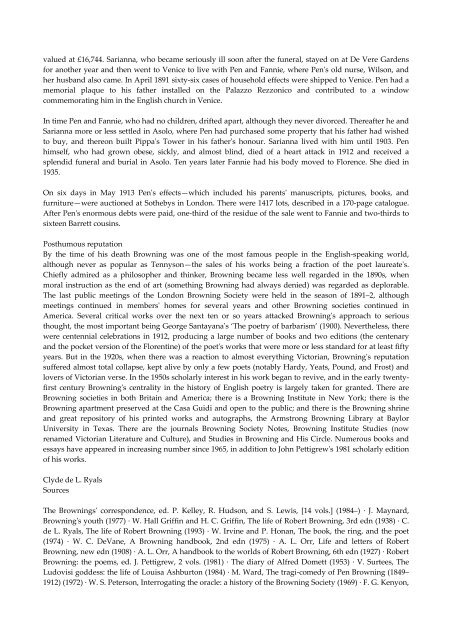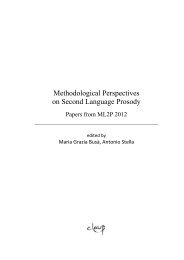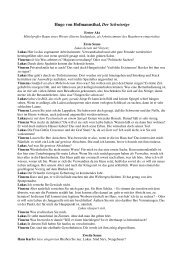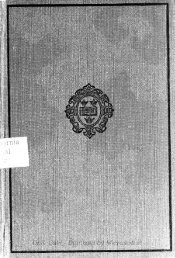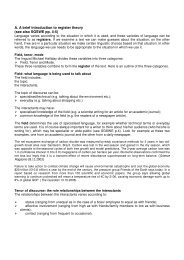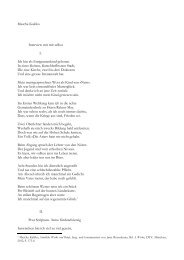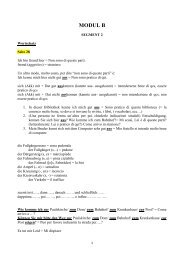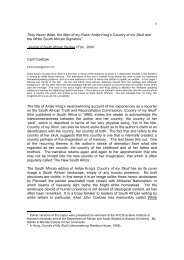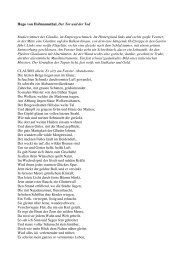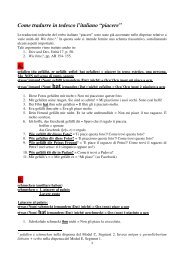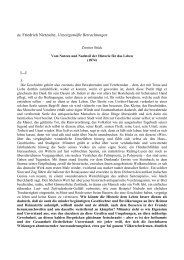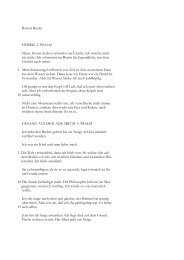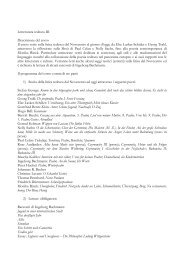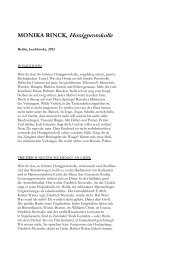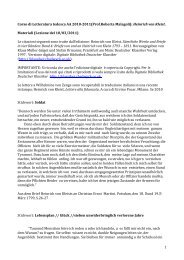The lives of the poets from The Dictionary of National Biography ...
The lives of the poets from The Dictionary of National Biography ...
The lives of the poets from The Dictionary of National Biography ...
You also want an ePaper? Increase the reach of your titles
YUMPU automatically turns print PDFs into web optimized ePapers that Google loves.
valued at £16,744. Sarianna, who became seriously ill soon after <strong>the</strong> funeral, stayed on at De Vere Gardens<br />
for ano<strong>the</strong>r year and <strong>the</strong>n went to Venice to live with Pen and Fannie, where Penʹs old nurse, Wilson, and<br />
her husband also came. In April 1891 sixty‐six cases <strong>of</strong> household effects were shipped to Venice. Pen had a<br />
memorial plaque to his fa<strong>the</strong>r installed on <strong>the</strong> Palazzo Rezzonico and contributed to a window<br />
commemorating him in <strong>the</strong> English church in Venice.<br />
In time Pen and Fannie, who had no children, drifted apart, although <strong>the</strong>y never divorced. <strong>The</strong>reafter he and<br />
Sarianna more or less settled in Asolo, where Pen had purchased some property that his fa<strong>the</strong>r had wished<br />
to buy, and <strong>the</strong>reon built Pippaʹs Tower in his fa<strong>the</strong>rʹs honour. Sarianna lived with him until 1903. Pen<br />
himself, who had grown obese, sickly, and almost blind, died <strong>of</strong> a heart attack in 1912 and received a<br />
splendid funeral and burial in Asolo. Ten years later Fannie had his body moved to Florence. She died in<br />
1935.<br />
On six days in May 1913 Penʹs effects—which included his parentsʹ manuscripts, pictures, books, and<br />
furniture—were auctioned at So<strong>the</strong>bys in London. <strong>The</strong>re were 1417 lots, described in a 170‐page catalogue.<br />
After Penʹs enormous debts were paid, one‐third <strong>of</strong> <strong>the</strong> residue <strong>of</strong> <strong>the</strong> sale went to Fannie and two‐thirds to<br />
sixteen Barrett cousins.<br />
Posthumous reputation<br />
By <strong>the</strong> time <strong>of</strong> his death Browning was one <strong>of</strong> <strong>the</strong> most famous people in <strong>the</strong> English‐speaking world,<br />
although never as popular as Tennyson—<strong>the</strong> sales <strong>of</strong> his works being a fraction <strong>of</strong> <strong>the</strong> poet laureateʹs.<br />
Chiefly admired as a philosopher and thinker, Browning became less well regarded in <strong>the</strong> 1890s, when<br />
moral instruction as <strong>the</strong> end <strong>of</strong> art (something Browning had always denied) was regarded as deplorable.<br />
<strong>The</strong> last public meetings <strong>of</strong> <strong>the</strong> London Browning Society were held in <strong>the</strong> season <strong>of</strong> 1891–2, although<br />
meetings continued in membersʹ homes for several years and o<strong>the</strong>r Browning societies continued in<br />
America. Several critical works over <strong>the</strong> next ten or so years attacked Browningʹs approach to serious<br />
thought, <strong>the</strong> most important being George Santayanaʹs ‘<strong>The</strong> poetry <strong>of</strong> barbarism’ (1900). Never<strong>the</strong>less, <strong>the</strong>re<br />
were centennial celebrations in 1912, producing a large number <strong>of</strong> books and two editions (<strong>the</strong> centenary<br />
and <strong>the</strong> pocket version <strong>of</strong> <strong>the</strong> Florentine) <strong>of</strong> <strong>the</strong> poetʹs works that were more or less standard for at least fifty<br />
years. But in <strong>the</strong> 1920s, when <strong>the</strong>re was a reaction to almost everything Victorian, Browningʹs reputation<br />
suffered almost total collapse, kept alive by only a few <strong>poets</strong> (notably Hardy, Yeats, Pound, and Frost) and<br />
lovers <strong>of</strong> Victorian verse. In <strong>the</strong> 1950s scholarly interest in his work began to revive, and in <strong>the</strong> early twenty‐<br />
first century Browningʹs centrality in <strong>the</strong> history <strong>of</strong> English poetry is largely taken for granted. <strong>The</strong>re are<br />
Browning societies in both Britain and America; <strong>the</strong>re is a Browning Institute in New York; <strong>the</strong>re is <strong>the</strong><br />
Browning apartment preserved at <strong>the</strong> Casa Guidi and open to <strong>the</strong> public; and <strong>the</strong>re is <strong>the</strong> Browning shrine<br />
and great repository <strong>of</strong> his printed works and autographs, <strong>the</strong> Armstrong Browning Library at Baylor<br />
University in Texas. <strong>The</strong>re are <strong>the</strong> journals Browning Society Notes, Browning Institute Studies (now<br />
renamed Victorian Literature and Culture), and Studies in Browning and His Circle. Numerous books and<br />
essays have appeared in increasing number since 1965, in addition to John Pettigrewʹs 1981 scholarly edition<br />
<strong>of</strong> his works.<br />
Clyde de L. Ryals<br />
Sources<br />
<strong>The</strong> Browningsʹ correspondence, ed. P. Kelley, R. Hudson, and S. Lewis, [14 vols.] (1984–) ∙ J. Maynard,<br />
Browningʹs youth (1977) ∙ W. Hall Griffin and H. C. Griffin, <strong>The</strong> life <strong>of</strong> Robert Browning, 3rd edn (1938) ∙ C.<br />
de L. Ryals, <strong>The</strong> life <strong>of</strong> Robert Browning (1993) ∙ W. Irvine and P. Honan, <strong>The</strong> book, <strong>the</strong> ring, and <strong>the</strong> poet<br />
(1974) ∙ W. C. DeVane, A Browning handbook, 2nd edn (1975) ∙ A. L. Orr, Life and letters <strong>of</strong> Robert<br />
Browning, new edn (1908) ∙ A. L. Orr, A handbook to <strong>the</strong> worlds <strong>of</strong> Robert Browning, 6th edn (1927) ∙ Robert<br />
Browning: <strong>the</strong> poems, ed. J. Pettigrew, 2 vols. (1981) ∙ <strong>The</strong> diary <strong>of</strong> Alfred Domett (1953) ∙ V. Surtees, <strong>The</strong><br />
Ludovisi goddess: <strong>the</strong> life <strong>of</strong> Louisa Ashburton (1984) ∙ M. Ward, <strong>The</strong> tragi‐comedy <strong>of</strong> Pen Browning (1849–<br />
1912) (1972) ∙ W. S. Peterson, Interrogating <strong>the</strong> oracle: a history <strong>of</strong> <strong>the</strong> Browning Society (1969) ∙ F. G. Kenyon,


